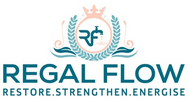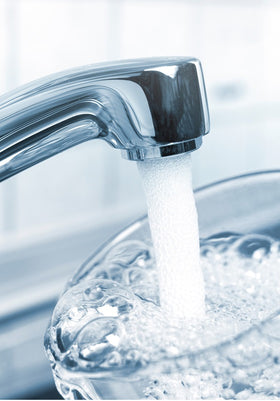
Reverse Osmosis in Healthcare and Laboratories: Ensuring Purity and Safety
Think of water as the unsung hero in healthcare and labs—vital for everything from patient care to precision research. Reverse osmosis (RO) is the trusty sidekick, keeping everything pure and safe. In Reverse Osmosis Systems for Commercial & Industrial Applications, we explore how RO supports everything from dialysis machines to countertop dispensers, making it essential for safety, compliance, and accuracy in medical and research settings.
The Critical Need for Ultrapure Water in Healthcare and Labs
Water is far more than a basic need in healthcare and laboratories—it's a cornerstone of safety and precision. When it comes to medical treatments or laboratory research, purity is key. A single contaminant can alter results, compromise patient health, and undermine years of hard work. For this reason, having ultrapure water is not just a luxury; it’s a necessity.
Preventing Contamination and Ensuring Accurate Results
Imagine a researcher’s frustration when a single drop of contaminated water throws off an entire experiment. Or a patient undergoing dialysis and being exposed to harmful impurities. Contaminants, no matter how small, can wreak havoc in both medical and laboratory settings. This is why ultrapure water is a non-negotiable. Reverse osmosis (RO) helps ensure that the water used in these critical environments is free from bacteria, viruses, and harmful chemicals, safeguarding patient health and guaranteeing the accuracy of research.
Meeting Strict Purity Standards
Water in healthcare facilities and labs needs to meet stringent quality standards. The smallest trace of bacteria or chemicals could lead to infections, skewed research findings, or compromised treatments. RO systems play an essential role in making sure water meets these exacting standards, ensuring it’s safe for use in everything from clinical procedures to scientific experiments.
How Reverse Osmosis Systems Provide High-Purity Water
Now that we understand why ultrapure water is so crucial, let’s dive into how RO systems actually work their magic. These systems are designed to filter out a range of harmful contaminants, leaving you with nothing but pure, clean water.
Removal of Ions, Pyrogens, and Microorganisms
Reverse osmosis uses a semi-permeable membrane to filter out unwanted elements. It’s a bit like a bouncer at a nightclub—letting only the good stuff in while blocking out the troublemakers. Pyrogens, microorganisms, and ions that could negatively affect both patient safety and experimental results are all removed. This ensures that the water used in dialysis, sterilisation, and pharmaceutical manufacturing is as pure as it gets.
Consistent and Reliable Water Quality
In healthcare and labs, consistency is everything. Imagine a hospital using a water treatment system that sometimes works well and other times fails. That’s a recipe for disaster. RO systems are built to provide consistent and reliable water quality, day in and day out. Healthcare professionals and researchers can rest easy knowing that the water they rely on will meet the same high standards every single time.
Key Applications of RO in Healthcare and Laboratories
Reverse osmosis isn’t just a helpful addition—it’s a vital component in various critical processes. Whether it's in a hospital dialysis machine or a lab conducting ground-breaking research, RO systems are integral to maintaining safety and precision.
Dialysis Water Treatment
For patients undergoing dialysis, water purity isn’t optional—it’s life or death. Impure water could introduce harmful substances into the bloodstream, leading to complications or even infection. RO systems ensure that water used in dialysis is free from these contaminants, keeping patients safe and comfortable throughout their treatment.
Pharmaceutical Manufacturing
The pharmaceutical industry demands perfection when it comes to water quality. Water used in drug manufacturing must be pure enough to prevent contamination in medications, especially injectable solutions. RO systems ensure that every drop meets the stringent standards required, helping to produce safe, effective treatments for patients worldwide.
Laboratory Reagent Water
In laboratories, even a tiny impurity in water can ruin an experiment. Whether it's for preparing chemical solutions or diluting reagents, water needs to be flawless. RO systems deliver the high-purity water that researchers rely on for accuracy in their experiments, ensuring that results are as reliable as possible.
Sterilisation Processes
In any healthcare setting, sterilisation is a key step in preventing the spread of infections. RO-treated water is often used in sterilisation processes, such as autoclaving, to ensure that equipment is fully decontaminated. Using ultrapure water eliminates the risk of cross-contamination, safeguarding both patients and staff.
Clinical Analysers
Clinical analysers rely on ultrapure water to function properly. These machines, which help doctors diagnose conditions and diseases, depend on pure water to ensure the accuracy of test results. Contaminated water could lead to false readings, which might delay diagnosis or lead to incorrect treatments. RO systems keep these analysers running smoothly by providing water that meets the highest purity standards.
Specific Purity Standards and Regulations for Healthcare and Labs
Water used in medical and laboratory settings must meet various purity standards and regulations. These ensure that the water is free from contaminants and safe for both patient care and research.
USP and Other Pharmacopoeia Standards
The United States Pharmacopeia (USP) and other pharmacopoeia standards dictate the required water quality for medical and pharmaceutical use. These guidelines are strict, as even tiny impurities can affect patient health. RO systems are specifically designed to meet or exceed these standards, ensuring water is free from contaminants and safe for use in everything from drug production to patient treatments.
CLSI Guidelines for Laboratory Water
In laboratory settings, the Clinical and Laboratory Standards Institute (CLSI) outlines the necessary water quality for testing and research. These guidelines ensure that water used for tests and experiments does not introduce errors into results. RO systems help labs meet these stringent requirements, making sure the water used is pure enough to support critical scientific work.
Selecting and Maintaining RO Systems for Critical Applications
The right RO system can make all the difference. But choosing and maintaining the right equipment is crucial to keeping water purity at its peak. Let’s explore the steps involved in ensuring that RO systems continue to meet healthcare and laboratory needs.
System Design and Validation
Selecting an RO system isn’t a one-size-fits-all approach. Healthcare and laboratory facilities need systems that are tailored to their specific needs, whether it's for dialysis, pharmaceutical manufacturing, or laboratory research. Proper system validation is crucial to ensure that the RO unit consistently provides water of the required purity, day after day.
Redundancy and Backup Systems
Water purity cannot afford to be compromised, even for a moment. That’s why many facilities opt for redundancy and backup systems. If one RO unit fails, the backup system takes over, ensuring that the supply of purified water never falters. It’s a fail-safe that adds an extra layer of security to critical processes.
Strict Maintenance Protocols and Monitoring
Regular maintenance is essential for keeping RO systems in top working order. Filters, membranes, and other components must be regularly replaced and sanitised to prevent any build-up of contaminants. Additionally, ongoing water quality monitoring helps ensure that the system continues to perform at its best, so healthcare providers and researchers can focus on what matters most—patient care and ground-breaking discoveries.
Conclusion: The Essential Role of RO in Maintaining Purity and Safety
Reverse osmosis is far more than just a water treatment technology. It’s the backbone of purity and safety in healthcare and laboratories. From ensuring patient safety in dialysis to maintaining the integrity of laboratory experiments, RO systems are indispensable. By removing contaminants and providing consistent, high-quality water, reverse osmosis plays a pivotal role in preserving health and advancing research. In short, it’s a small but mighty solution for big health and scientific challenges.
More Reverse Osmosis info we think you'll love
RO Systems in the Food & Beverage Industry: Enhancing Quality and Compliance
Implementing RO Technology in Hospitality: Elevating Guest Experience
Optimising Coffee Shop Operations with RO Water Filtration
Selecting the Right Commercial RO System for Your Business
Maintaining Your Commercial RO System: Best Practices and Tips
Which Chemical is Best for RO Membrane Cleaning?
Industrial Reverse Osmosis Cost per Gallon
Commercial Water Filtration Systems
Industrial Reverse Osmosis System Cost
Light Commercial Reverse Osmosis System
Reverse Osmosis Pressure Vessel
Reverse Osmosis vs Carbon Filter



Leave a comment